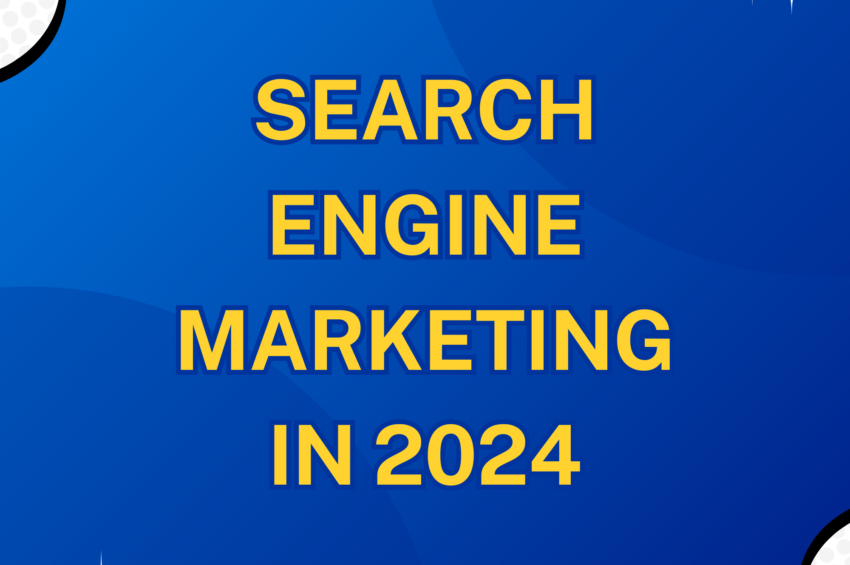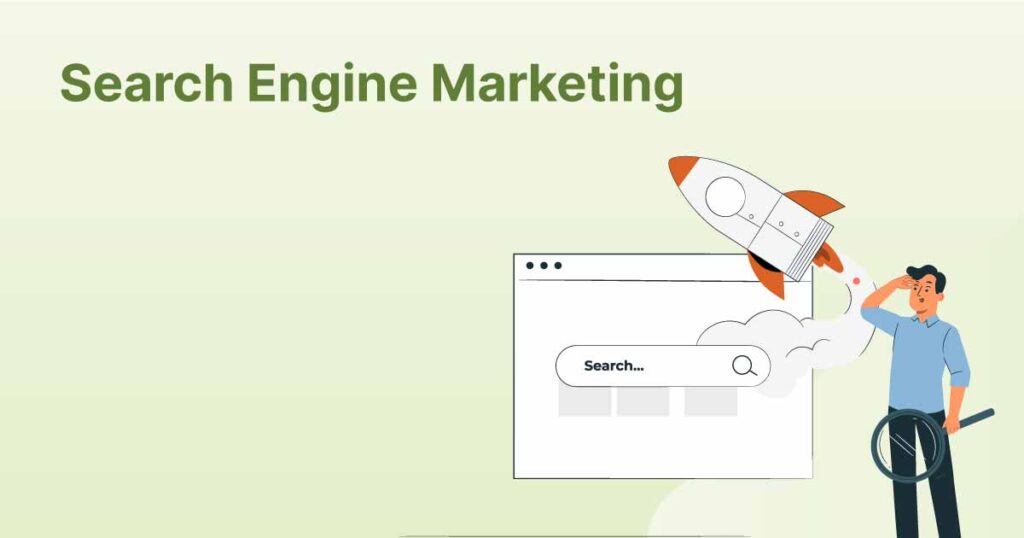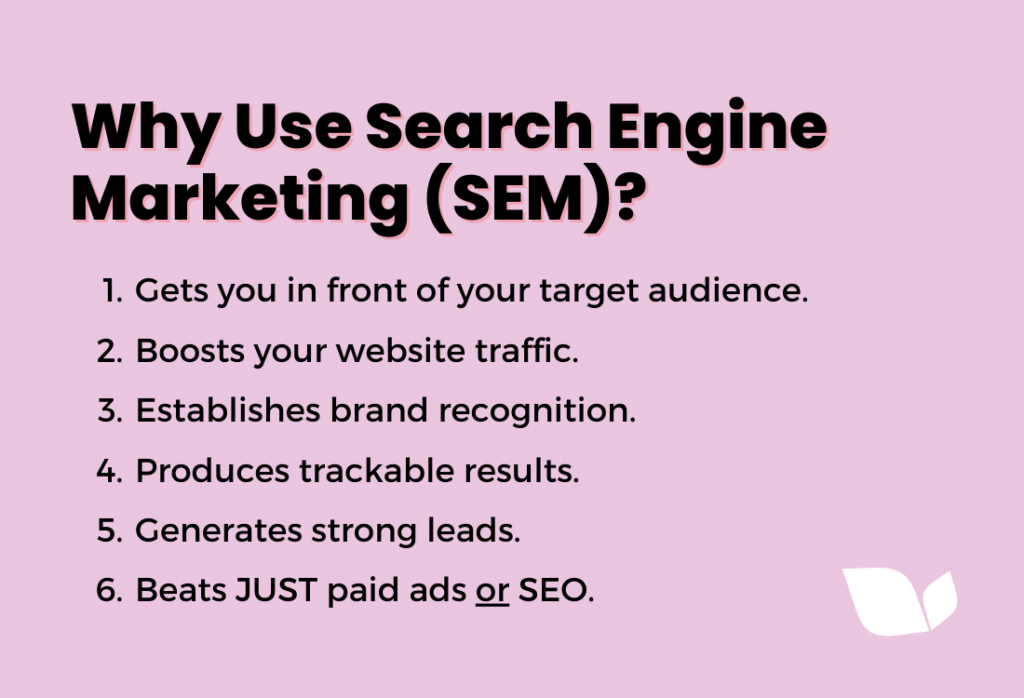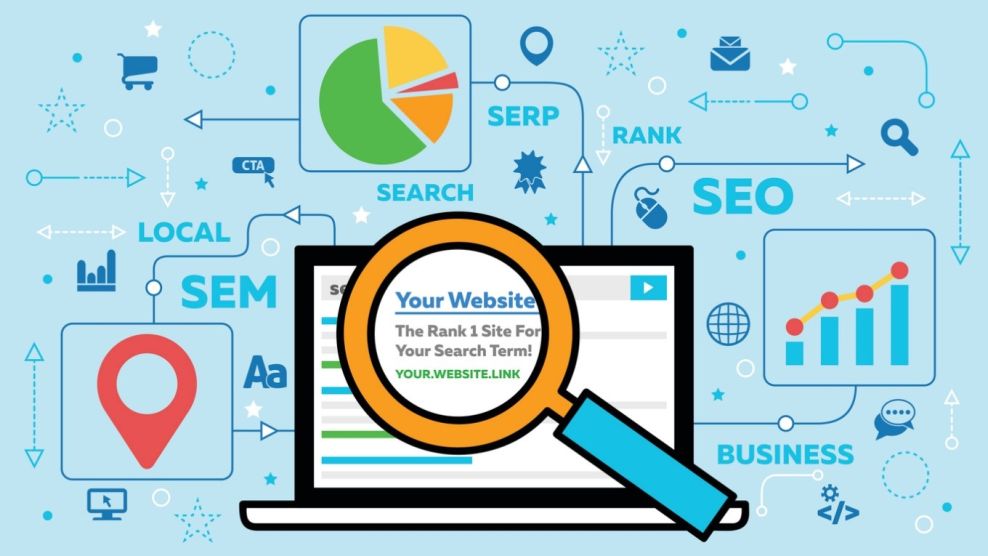
1. Introduction to Search Engine Marketing (SEM)
2. Key Components and Strategies of SEM
3. Understanding the Role of Keywords in SEM
4. Benefits and Importance of SEM in Digital Marketing
5. How to Plan and Execute a Successful SEM Campaign
6. Tracking and Analyzing SEM Performance
7. Common Challenges and Best Practices in SEM
8. The Future of Search Engine Marketing
Search Engine Marketing (SEM) is a crucial component of digital marketing that focuses on increasing a website’s visibility and driving targeted traffic through search engines. SEM encompasses various strategies, such as paid search advertising and search engine optimization (SEO), to ensure businesses can effectively reach their target audience. In today’s competitive online landscape, understanding and utilizing SEM techniques is essential for businesses aiming to maximize their online presence, generate leads, and achieve their marketing goals. This article explores the fundamentals of SEM, its key components, strategies, benefits, and best practices, providing valuable insights for both beginners and experienced marketers in the ever-evolving world of digital marketing.
1. Introduction to Search Engine Marketing (SEM)

Defining Search Engine Marketing
Search Engine Marketing, or SEM for short, is like the Beyoncé of digital marketing strategies. It’s all about making your website shine like a diamond in the vast ocean of search engine results. SEM involves using paid advertisements and optimization techniques to increase your website’s visibility on search engine results pages (SERPs).
The Evolution and Importance of SEM
SEM has come a long way since the early days of the internet, where you could throw a bunch of keywords onto your website and hope for the best. Nowadays, with millions of websites competing for attention, SEM has become an essential tool for businesses looking to stand out from the crowd. It’s like the difference between whispering your website’s name in a crowded room or shouting it through a megaphone.
2. Key Components and Strategies of SEM

Paid search advertising is like paying a bouncer to let your website skip the line and go straight to the VIP section of search engine results. You bid on keywords relevant to your business, and your ads appear at the top of the SERPs, where all the cool kids hang out. It’s a great way to get immediate visibility and attract potential customers already searching for your offer.
Search Engine Optimization (SEO)
Search Engine Optimization is the art of making your website irresistible to search engines. It’s like turning your website into a magnet that attracts more clicks than a viral cat video. By optimizing your content, meta tags, and other behind-the-scenes stuff, you can rank higher on search engine results organically. It’s like winning a popularity contest without having to dance awkwardly in front of a crowd.
Content marketing is the secret weapon that makes SEM even more powerful. It’s like adding “extra cheese” to your SEM pizza. By creating high-quality, relevant content—like blog posts, videos, or infographics—you can attract more visitors to your website and keep them coming back for more. It’s like offering free samples at the grocery store; once they taste your content, they’ll be craving for more.
3. Understanding the Role of Keywords in SEM

Keyword Research and Analysis
Keywords are the bread and butter of SEM. They are the words or phrases that people type into search engines when looking for something. Doing proper keyword research and analysis is like having a crystal ball that shows you what your target audience wants. By identifying the right keywords, you can optimize your website and ads to match the search intent of your potential customers.
Keyword Match Types and Targeting
Choosing the right keyword match types is like finding the perfect pair of shoes for your SEM outfit. It determines how closely your ads match the search queries of users. Whether it’s exact match, phrase match, or broad match, you want to ensure your ads are appearing in front of the right audience, like a billboard strategically placed on a highway full of potential customers.
Optimizing Keywords for Better Performance
Optimizing keywords is like turning up the volume on your SEM campaign. You want your ads to sing like Mariah Carey hitting those high notes. By constantly monitoring and tweaking your keyword performance, you can improve your click-through rates, conversions, and overall campaign success. It’s like fine-tuning an instrument to create the perfect symphony of search engine marketing.
4. Benefits and Importance of SEM in Digital Marketing

Increase Website Visibility and Traffic
SEM is the magic wand that brings your website into the spotlight. By using paid search advertising and SEO strategies, you can get your website seen by more people than a Kardashian’s Instagram post. Increased visibility leads to more traffic, which means more opportunities to convert visitors into loyal customers.
Targeted Marketing and Audience Engagement
SEM allows you to be a digital Sherlock Holmes. You can sleuth out your target audience’s deepest desires and deliver tailored ads directly to their search results. It’s like speaking their language and offering exactly what they’re looking for. This level of targeting creates a deeper connection with your audience and increases the chances of engagement and conversion.
Measurable Results and Return on Investment (ROI)
With SEM, you don’t have to play the guessing game. The beauty of digital marketing is that you can measure almost everything. SEM provides detailed analytics and insights into your campaign’s performance, allowing you to track exactly how many people clicked on your ads, made a purchase, or did the Macarena while browsing your website. This data helps you optimize your campaign and achieve a higher return on investment, making your boss do a happy dance.
So there you have it, the lowdown on SEM in the world of digital marketing. It’s a powerful tool that can help your website reach new heights and leave your competition in the dust. Just remember to keep your keywords in tune, your content fresh, and your SEM strategies as vibrant as a disco ball. Happy marketing!
5. How to Plan and Execute a Successful SEM Campaign

Setting Clear Objectives and Goals
When planning your SEM campaign, it’s crucial to set clear objectives and goals. What are you trying to achieve? Do you want to increase website traffic, generate leads, or boost sales? By defining your objectives, you can tailor your SEM strategies accordingly.
Creating a Budget and Allocating Resources
SEM campaigns require financial investment, so it’s essential to create a budget and allocate resources wisely. Consider factors such as keyword bidding costs, ad spend, and hiring external professionals or agencies if needed. Keep in mind that SEM is an ongoing process, so ensure you have a sustainable budget.
Choosing the Right SEM Platforms and Tools
There are numerous SEM platforms and tools available, making it essential to choose the right ones for your campaign. Research and compare different options based on factors like user interface, targeting capabilities, and pricing. Experiment with different platforms to find the ones that best suit your needs and audience.
6. Tracking and Analyzing SEM Performance

Implementing Conversion Tracking
Conversion tracking is crucial for measuring the success of your SEM campaign. It allows you to track the actions users take after clicking on your ads, such as making a purchase or filling out a form. By implementing conversion tracking, you can analyze which keywords and ads are driving the most valuable actions.
Interpreting Key Performance Indicators (KPIs)
To evaluate the performance of your SEM campaign, you need to interpret key performance indicators (KPIs). KPIs such as click-through rate (CTR), conversion rate, and return on ad spend (ROAS) provide valuable insights into the effectiveness of your ads. Regularly monitor and analyze these metrics to identify areas for improvement.
A/B Testing and Continuous Optimization
A/B testing involves running multiple versions of ads or landing pages to see which performs better. This allows you to optimize your campaign continuously. Test different ad headlines, copy, and visuals to determine what resonates best with your target audience. Remember, SEM is an ongoing process, so always strive for continuous improvement.
7. Common Challenges and Best Practices in SEM

Budget Constraints and Cost Management
One common challenge in SEM is managing budget constraints. It’s crucial to find a balance between bidding on competitive keywords and optimizing your budget. Focus on long-tail keywords and consider using cost-saving techniques like ad scheduling and geo-targeting to maximize your ad spend.
Dealing with Competitive Keywords
Competitive keywords can be a headache, especially if you’re operating in a crowded market. To tackle this challenge, focus on niche keywords that have less competition. Long-tail keywords, specific to your niche, can be highly effective. Additionally, optimizing your landing pages and improving ad quality can help increase your ad rank.
Staying Updated with Industry Trends and Algorithm Changes
The landscape of SEM is ever-evolving, with search engine algorithms and industry trends changing frequently. Stay updated with these changes to ensure your SEM strategies remain effective. Follow industry publications, attend conferences, and network with experts to stay on top of the latest developments.
8. The Future of Search Engine Marketing

Emerging Technologies and Trends
The future of SEM is exciting, with emerging technologies such as artificial intelligence (AI) and machine learning shaping the landscape. Embrace these technologies and explore ways to leverage them in your SEM strategies. Keep an eye on trends like interactive ads, video marketing, and voice search, which are becoming increasingly popular.
Voice Search and Mobile Optimization
As more people use voice assistants like Siri and Alexa, optimizing your SEM campaigns for voice search is crucial. Focus on long-tail conversational keywords and ensure your website is mobile-friendly, as voice search is predominantly performed on mobile devices. Mobile optimization should be a top priority to stay ahead in the SEM game.
Personalization and AI in SEM
Personalization and AI are transforming the way marketers approach SEM. Utilize AI-powered tools to analyze user behavior, personalize ad experiences, and deliver targeted messaging. Tailor your SEM campaigns based on user preferences, demographics, and previous interactions to create a more personalized and engaging experience. In conclusion, Search Engine Marketing (SEM) plays a pivotal role in the success of any digital marketing strategy. By leveraging paid search advertising, SEO, and other powerful tactics, businesses can enhance their online visibility, attract targeted traffic, and achieve their marketing objectives. As the digital landscape continues to evolve, staying updated with the latest SEM trends and best practices is crucial for maintaining a competitive edge. By implementing effective SEM campaigns, businesses can maximize their online potential, engage with their target audience, and drive sustainable growth. Embracing the power of SEM will undoubtedly contribute to long-term success in the dynamic world of digital marketing.
FAQ
1. What is the difference between SEM and SEO?
SEM and SEO are two distinct but closely related strategies in digital marketing. SEM involves paid advertising on search engines to gain visibility and drive traffic, while SEO focuses on optimizing a website’s content and structure to organically improve its search engine rankings. While both aim to increase visibility in search engine results, SEM offers more immediate and measurable results through paid ads, whereas SEO requires ongoing efforts to improve organic rankings over time.
2. How do I choose the right keywords for my SEM campaign?
Choosing the right keywords for your SEM campaign requires thorough research and analysis. Start by identifying keywords relevant to your business, products, or services. Utilize keyword research tools to explore search volumes, competition levels, and user intent. Consider long-tail keywords that are more specific and have lower competition. Additionally, analyze your competitors’ keywords to gain insights. Continually monitor and refine your keyword selection based on performance and changes in market trends.
3. How can I measure the success of my SEM campaign?
Measuring the success of your SEM campaign involves tracking various key performance indicators (KPIs). Some essential metrics to monitor include click-through rates (CTR), conversion rates, cost per click (CPC), return on ad spend (ROAS), and overall website traffic. Implement conversion tracking and utilize analytics tools to gain insights into user behavior and campaign performance. Regularly review and analyze these metrics to make data-driven optimizations and assess the overall success of your SEM campaign.
4. Is SEM suitable for small businesses with limited budgets?
Yes, SEM can be beneficial for small businesses with limited budgets. One advantage of SEM is that it allows you to set your own budget and control your ad spend. Start with a modest budget and focus on targeting specific keywords or niche markets to maximize your return on investment. Additionally, continually monitor and optimize your campaigns to ensure they align with your budget constraints. With strategic planning and efficient targeting, small businesses can effectively leverage SEM to reach their target audience and compete in the digital landscape.
WATCH OUT THIS VIDEO FOR MORE INFORMATION-


